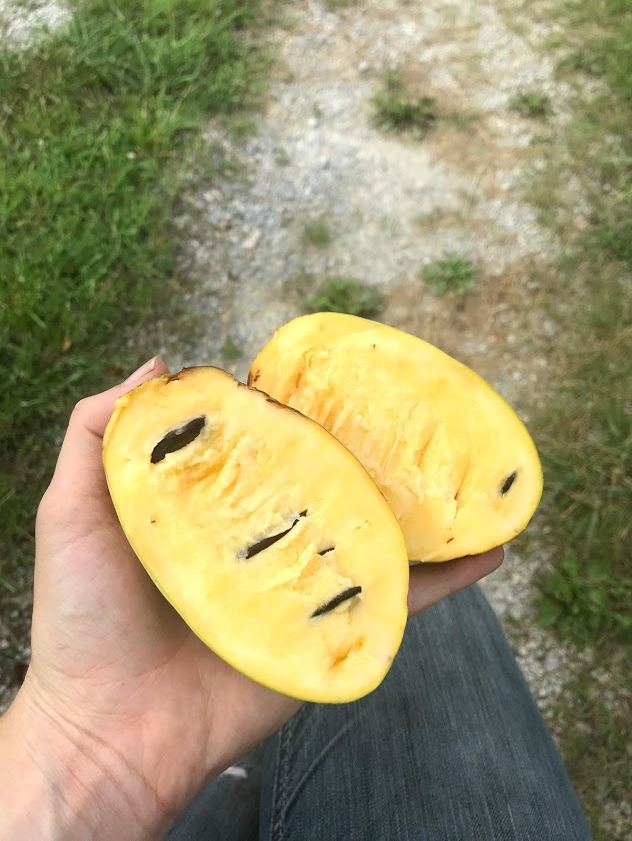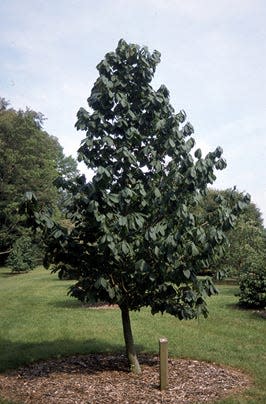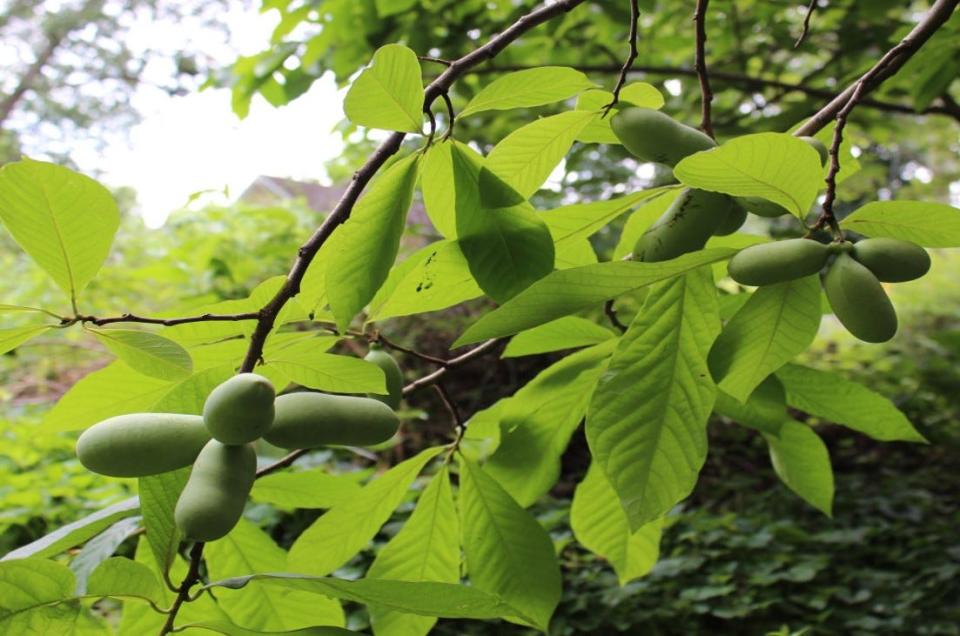How to grow a pawpaw tree at home

Winter can be the good time to evaluate your home landscape and make plans for planting new trees and shrubs when spring arrives. The starkness of the winter landscape, especially under a blanket of fresh snow like Greater Columbus experienced earlier this past week, can serve as a blank canvas to envision how new plant material can complement existing plant material in the landscape.
Each year, I like to plant one or two new trees in my fairly large residential landscape. This coming growing season will mark the tenth year we have lived in this house. During that time, we have planted 24 different trees of various species and sizes. In fact, my neighbor who loves his large expanse of lawn with just a single tree has accused me of starting an arboretum in my yard. This spring, I plan to plant one of Ohio’s most interesting native tree species—the pawpaw, which is the state native fruit of Ohio.
Trees:Ohio's ban on Callery pear trees now in effect
Pawpaw history
The fruit of the pawpaw was consumed by both Native Americans and early European settlers. At least two U.S. presidents enjoyed pawpaw fruit as George Washington reportedly enjoyed them for dessert, and Thomas Jefferson grew them at his estate in Monticello, Virginia.
Native American tribes cultivated the pawpaw for its fruit and are responsible for its wide range today. Native Americans used the pawpaw fruit to make small cakes that were dried and stored. The dried cakes were soaked in water and cooked to make a sauce or relish served with cornbread. Raw and cooked fruits were dried by the sun or on fire. Native Americans also used the inner bark to make string and rope by twisting the bark.
Pawpaw fruit are yellowish-green to brown, cylindrical, mango-shaped fruits. They are 3 to 5 inches in length and grow solitarily or two to four together. Pawpaw ripen between August and October. Fruits have a thin skin containing a yellow custard-like pulp, which has a taste similar to mango and papaya. Each fruit contains several flat seeds.

Growth habits
The pawpaw (Asimina triloba) grows throughout Ohio and most of the Eastern United States. It is a native understory tree that typically grows at the edge of the forest, much like the dogwood. Pawpaw often grows in moist locations such as the bottoms of ravines, steep hillsides and creek banks. A single pawpaw tree often gives rise over the course of decades to large groves of pawpaw trees via its root system, which suckers several feet away from the parent tree.
This small tree is easily recognized by its large, tropical-looking foliage and prized for its delicious fruits that mature in late summer. When found in the open, pawpaw may reach 25 feet tall and 15 feet wide as an individual tree. As a member of the Annona Family, it is related to other species of pawpaw as well as other genera in this family ( all are tropical or subtropical in origin), and distantly related to Magnolia and Tulip tree.
Gardening:Pruning trees now can help prevent oak wilt
Pawpaw as a landscape tree
Pawpaw is a medium-sized tree that can be useful as a shade tree in certain areas of the landscape due to its dense canopy of foliage. Its medium size makes pawpaw suitable for locations in the landscape that are not suitable for larger shade trees such as oaks and maples.
While young pawpaws thrive mostly in locations with partial shade, adult pawpaw trees seem to tolerate more sunny locations especially if the soil is kept moist with supplemental irrigation. Locations in the landscape which receive shade or dappled sunlight in the afternoon are ideal locations for pawpaw trees. Curb strip locations should definitely be avoided for this tree.

Pawpaw trees are rarely damaged by insects or disease, and deer are not attracted to its foliage. Research at OSU’s College of Food, Agricultural and Environmental Sciences is currently being conducted to identify pawpaw cultivars that are adapted to different conditions, including full-sun locations.
Pawpaw trees are typically available during the growing season at garden centers in Greater Columbus. Small pawpaw trees are typically available as nursery stock in containers, and larger specimens can be found as balled and burlap stock. Two trees will be needed for cross-pollination.
Mike Hogan is an Extension Educator, Agriculture and Natural Resources, and associate professor with Ohio State University Extension. hogan.1@osu.edu
This article originally appeared on The Columbus Dispatch: Pawpaw trees can be a welcome addition to your home landscape

